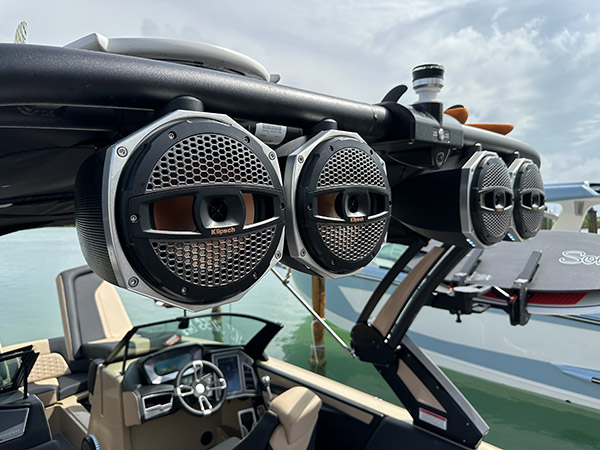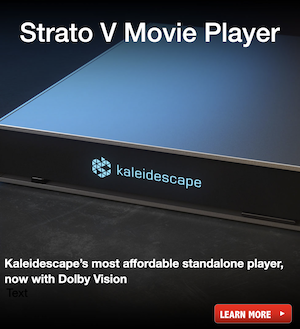(December 18, 2024) Onkyo is prepping for the new year with a reimagined brand identity, renewed focus, and a promise of innovative new products. Yesterday, the brand, long known as a pillar in the premium audio category, revealed its forthcoming transformation to media through an online event. Blending its heritage with a modernized approach aimed at appealing to both loyalists and a new generation of audio enthusiasts, Onkyo will use CES 2025 in Las Vegas to debut an array of fresh products, including amp and preamp separates along with speakers, all of which can be partially seen in a new teaser trailer.
The company's roots run deep, dating back to its founding in post-war Japan by Takeshi Godai. Over the decades, Onkyo has built a reputation for crafting high-quality, precision-engineered audio solutions that resonate with audiophiles and home theater fans alike. In recent years, however, it's faced challenges that led to its acquisition by Premium Audio Company and Voxx International in 2021. Now, under new leadership and with a revitalized direction, Onkyo is poised to reassert itself as a leader in AV.
A new logo, described as a balance between traditional and modernity, reflects the brand’s updated identity: confident, professional, and in tune with contemporary aesthetics. Paired with a refreshed tone and marketing strategy, Onkyo says it's positioning itself to connect emotionally with its audience while maintaining the technical excellence that has defined its products for decades.
Perhaps the most exciting news is Onkyo’s return to product categories that have long defined its reputation. The teaser trailer released alongside PR materials hints at amplifier and pre-amplifier separates that appear to blend modern touches with a classic feel. Alongside these separates, Onkyo plans to reintroduce a home speaker series and, potentially, other advanced specialty electronics, signaling a broadened product portfolio designed to cater to both casual listeners and premium hi-fi enthusiasts.
The company has also invested heavily in its Osaka-based Premium Audio Company Technology Center (PACTC), a hub of innovation where engineers and technicians with decades of experience collaborate to push the boundaries of audio engineering. This facility will play a central role in developing Onkyo’s next-generation products and ensuring they meet the high standards the brand is known for.
Onkyo’s transformation extends beyond products. Collaborations with iconic brands like Klipsch and partnerships with entertainment giants such as Marvel Television underscore its commitment to staying relevant in a rapidly evolving market, ultimately appealing to new customer bases. Additionally, new marketing strategies, including influencer partnerships and a focus on social media engagement, aim to create a vibrant community around the brand.
We'll publish information on Onkyo's new models as soon as it becomes available, which will likely be the opening day of CES 2025.
Related Reading:
- Onkyo, Pioneer, Elite, and Integra Announce New Firmware Updates: Fresh Features for Audiophiles and Home Theater Enthusiasts
- How Does Klipsch's Dirac Capable Flexus Core 300 Soundbar Actually Sound? We've Got Details and a First Impression Review
- Onkyo and Dirac Strengthen Ties, Tease What's to Come
- Premium Audio Company Releases Firmware Update for Its Flagship Receiver Lineup - Onkyo, Integra, Pioneer, and Elite
- Premium Audio Company's Re-Hire of Rob Vieira is a Big Deal for the Company's AVR Brands and Enthusiasts, Alike
Last edited:










